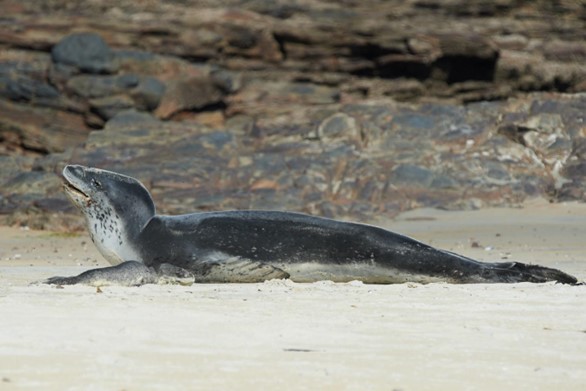
Ōtepoti – A new world first study has found leopard seal births and pups sightings are not limited to the Antarctic.
Leopard seals had always been considered an Antarctic species, residing predominantly within the pack ice. Births were always thought to occur on the ice flows surrounding the continent.
However, new research shows study reveals this is simply not the case. Leopard seals were found to be birthing their young in multiple regions throughout the southern hemisphere.
After discovering three birth records in New Zealand, a team of New Zealand scientists worked in collaboration with others from around the globe to build the world’s first leopard seal birth and pup sightings database.
Lead author Dr Krista van der Linde from WWF-New Zealand, the University of Canterbury, and LeopardSeals.org say despite their ecological importance as a top order marine predator, little is actually known about them giving birth or their early life stages as a pup.
They had no idea how many birth and pup records existed. Originally the researchers aimed to document three births which occurred in New Zealand waters but then the study expanded to include sightings elsewhere.
While they expected to find birth and pup records from Antarctica, the extent of birth and pup sighting records from outside of that region has come as quite a big surprise.
Leopard seal birth and pup sightings were documented in the Antarctic, the sub-Antarctic Islands, Chile, the Falkland Islands, New Zealand and Australia.
The birth and pup sighting records show leopard seals do not just give birth on the Antarctic pack ice, as had previously been the assumed normal, but that they are in fact regularly giving birth on land much further north.
Dr Ingrid Visser, also from the University of Canterbury and LeopardSeals.org say they were intrigued to find that approximately 84 percent of birth records and 54 percent of the pup records occurred in places other than Antarctica.
LeopardSeals.org say the study is instrumental in identifying the importance of northern regions to the leopard seals range. The organisation cannot protect the seal populations in one area, because they have clearly shown that many areas beyond the traditional core range are potentially important to their reproduction.
The study was a collaboration between the British Antarctic Survey UK, Department of Conservation NZ, LeopardSeals.org NZ, National Antarctic Scientific Centre of Ukraine, National Marine Fisheries Service USA, Orca Research Trust NZ, Oregon State University USA, Universidad de Valparaíso Chile, University of Canterbury NZ, University of Minnesota USA and WWF-New Zealand.
Photo: Leopard seal mother and pup on St Kilda beach, Dunedin.

